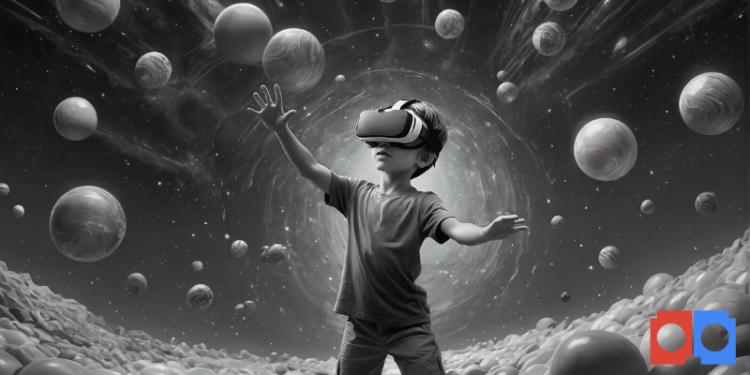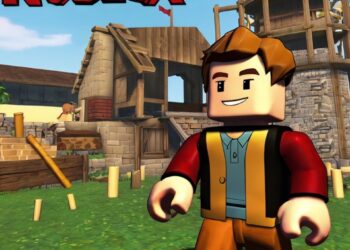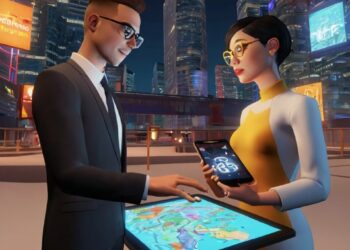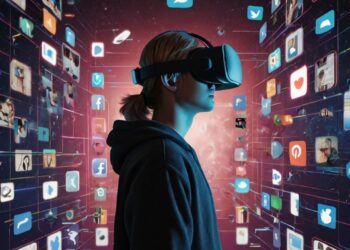The metaverse isn’t just a digital space; it’s a complete ecosystem that provides experiences across multiple sectors. While gaming activities are particularly dominant in this virtual landscape, their potential extends far beyond entertainment. including arts, entertainment, music, recreation, gaming, work, and education. The Metaverse is a place where people can build real life connections, learn new skills, buy and sell goods, run businesses, and more.
However,there are other categories of experiences in the Metaverse that can be worth your while. Here is a few things to do.
- Shopping
In the metaverse one can not only find and buy almost anything that exists in the physical world but also purchase items that don’t exist anywhere else. This means you can find the perfect pair of shoes or clothes in the comfort of your space without going to a physical store and even purchase products that are not currently for sale in physical stores.
Shopify was one of the first companies to enter the metaverse. It is an eCommerce platform that allows businesses to sell online. With their new Shopify Metaverse Store, companies can also trade in the metaverse.
In the Metaverse, one can browse catalogs and shopping sites or design personal shopping experiences, attend personalized fashion shows, or explore a digital mall with friends.
Brands like Nike and Gucci are already experimenting with these possibilities, offering unique shopping experiences that blend convenience with entertainment.
- Socializing
Socializing and connecting with new people in a customizable avatar is an immersive experience in the metaverse. Avatars are digital representations of someone. You can create an avatar that looks like you or design an avatar that is unique only to you. It allows you to meet and make friends with new people, hang out with them, or build social networks and meet in person in the virtual world.
The metaverse removes geographical barriers and creates new avenues for social interaction and shared experiences like attending concerts with friends from across the globe in virtual venues, hosting parties in customizable spaces, or even participating in interactive museum exhibits together. One platform one can explore in the Metaverse is the Rec Room. Also, the metaverse can transform communication and collaboration within and across organizations, fostering remote work environments and global connections.
- Entertainment
Hosting and attending concerts is another popular activity in the Metaverse. Artists and event organizers are creating digital shows that transcend physical limitations. The metaverse provides immersive digital environments that allow for unique and interactive experiences for attendees.
These digital experiences offer greater audience engagement and interactivity, allowing attendees to participate in a virtual world where they can explore, connect, and enjoy entertainment from the comfort of their own homes, while ensuring that the interactions are organic and personal. One can host all kinds of events, from music concerts and social gatherings to corporate events and learning sessions. Most platforms announce a monthly schedule of their events ahead of time.
Some of these entertainment platforms include; Decentraland, Fortnite, The Sandbox, etc. Artists like Justin Bieber, Travis Scott, and Ariana Grande have embraced this digital medium, hosting successful virtual performances that have captivated audiences worldwide.
- Education
The educational sector is another user focused area. The Metaverse has been used to create educational platforms that empower students to learn by undertaking a series of exciting missions within a virtual school campus. These missions challenge students to think critically and make real-life choices that impact the environment.
In the Metaverse, one can immerse oneself in historical battles, explore distant galaxies, or dissect virtual models in biology class. The metaverse offers interactive and engaging learning experiences that cater to different learning styles and hold the potential to revolutionize education.
One uniqueness of learning activities in the metaverse is that learners can easily collaborate with peers in real-time in virtual forms, such as at meetups, conferences, idea sharing, group discussions, presentation panels, or debates, which provide learners with more emotional support from peers around the world.
In the metaverse, with the aid of interaction technologies such as sensors, BCI, VR, AR, or XR, learners’ interactions usually involve embodied and multi-sensory participation, as a result, a wide range of learners’ senses (e.g., vision, audition, or kinesthesia) can be greatly stimulated and motivated when they interact in the metaverse (Genay et al., 2021; Zhao et al., 2022).
The Metaverse also serves as an ideal zone that allows children with special needs to have the possibility to study with general learners together.
- Virtual gaming
The Metaverse has created a new way for people to play games using AR/VR technology. Gaming is one of the main use cases of the Metaverse. Metaverse intends to bring the experience closer to gamers with VR games, and immersive entertainment. This means that with virtual reality headsets, users can be pulled into an immersive gaming experience that they have never experienced before; bringing the games they love to life in a new and exciting way. This means that gamers can travel anywhere without needing a plane ticket.
The Sandbox, for instance, has a collection of games that have gradually developed into a leading Metaverse platform. Users not only play games for fun but can also engage in ‘earn-to-play’ activities. Bloktopia has casinos and other games designed for this use case, and money earned will be credited to the user’s cryptocurrency wallet.
- Virtual travel and exploration
Virtual travel has broken the limitations of time and space in satisfying one’s desire for travel tours. Virtual tourism is basically a way to achieve a tourism experience without actually having to travel anywhere. It creates a near-life travel experience of a particular tourist attraction, museum, or destination by combining the two concepts of virtual reality and tourism. It has also been used as a marketing tool for destinations to sell themselves to prospective travelers, but today. Take a virtual tour of the Great Wall of China, dive into the depths of the ocean, or explore the surface of Mars without leaving your sofa.
The metaverse can satiate our wanderlust and allow us to experience diverse cultures and remote locations in ways never before possible. The Metaverse allows tourists to visit nonexistent and inaccessible places. It typically enables users to explore and connect to people or things in this imaginary destination using an avatar.
Conclusion:
This is just a starting point for truly endless possibilities. As the metaverse evolves, we can expect to see even more innovative and engaging consumer-focused activities emerge, blurring the lines between the physical and virtual worlds and offering exciting new ways to connect, learn, play, and experience life. However, there is a need to consider the ethical implications of these consumer activities in the metaverse.
















